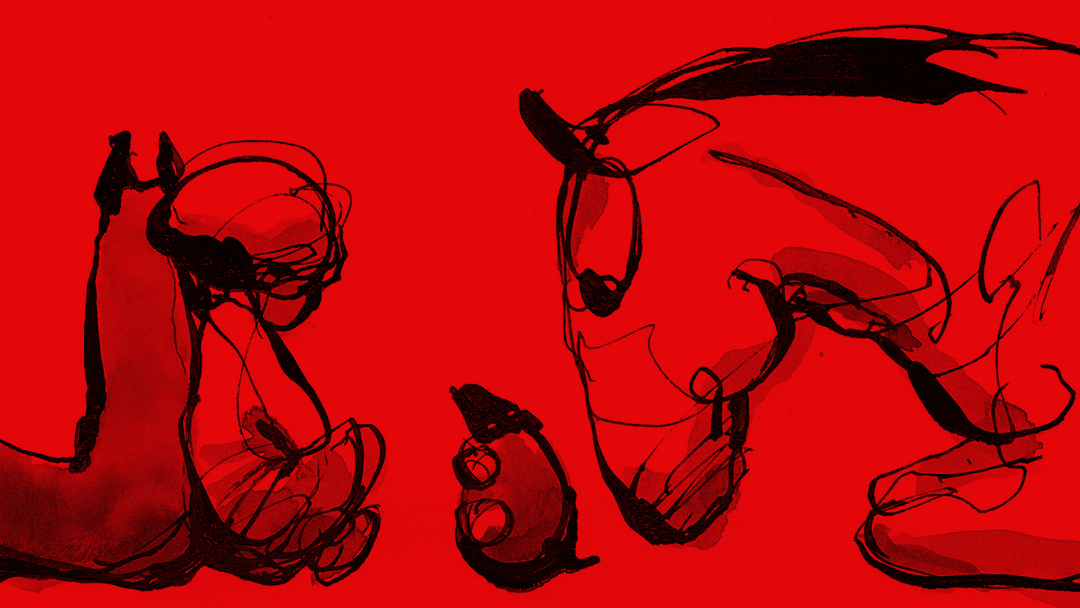The Boy, the Mole, the Fox and the Horse: Why it's a business book


“What is the bravest thing you've ever said?” asked the boy.
Charlie Mackesy, The Boy, the Mole, the Fox and the Horse
“Help,” said the horse.
“Asking for help isn't giving up,” said the horse. “It's refusing to give up.”
Every year we focus on a book to inspire us and find ways to improve our culture and ourselves. We buy a copy for each employee, and we revisit concepts and themes in our meetings and trainings throughout the year. In the past, we've read inspiring true stories like The Boys in the Boat, I’ll Push You, Unbroken. We’ve read business books like The Convenience Revolution.
This year we chose The Boy, the Mole, the Fox and the Horse. It’s different from anything we’ve chosen before – more pictures and few words, yet jam-packed with lessons that apply to work and life. This post shares why I recommend you read this book and apply it with your team.
From the Amazon description: “Charlie Mackesy offers inspiration and hope in uncertain times in this beautiful book, following the tale of a curious boy, a greedy mole, a wary fox and a wise horse who find themselves together in sometimes difficult terrain, sharing their greatest fears and biggest discoveries about vulnerability, kindness, hope, friendship and love.”
At a Vistage retreat last August, my facilitator read some excerpts from this book and had us all talk about how it applied to us in life. He wasn’t answering any questions or telling us what he felt, just asking thought provoking questions about what we saw and how we could use it.
It struck me right away that this could be a great book for our team. It's simple, it's easy to read. You can read it multiple times and it can be practical, not only at work, but also at home.
I thought it would be a fun change from the things that we've done in the past that don't necessarily hold value for everyone. I wanted something that would be completely different than the true story of overcoming a challenge or a book that's strictly about behaviors at work - something more altruistic and bigger than yourself to figure out how you could operate differently at work and at home.
This is a book that you can keep going back to and still get value out of it, and it's so enjoyable that you want to go back to it.
We asked everyone to read the book by the end of January, and people keep bringing up themes from the book in meetings and discussions. Some days, that’s as simple as “cake” - something the Mole brings up often, which you could read as a reminder to take comfort in simple pleasures. Our team has a wicked sense of humor, and “cake” has become shorthand for “I’m having a hard day and could use some support”.
We discussed the book in one of our weekly Tuesday Teams meetings – complete with mini bundt cakes to drive the theme home. We broke into groups and gave each group one of the characters in the book to discuss:
I loved the effort everyone put into it. You could see what they were thinking about and how they used some of the tools that we already have as resources.
That really helped the team see how they can apply these lessons in different situations, using these characters to think about how we're all different and how to balance our strengths as a team. It takes big ideas and makes them more of an easy, clear path you can understand, instead of just big thoughts circling around out there that you don't know how to put to work.
I think it's been a great choice. I've seen people relating back to the ideas to think differently about the people that they're working with - how their strengths and their teammates’ strengths can be used to support each other. You have four different characters in the book, four very different personalities, and they're all trying to get along and move forward together. We apply those lessons every day.
I would recommend it to other business leaders who value teamwork as a part of their culture. I think it's a great tool for helping people understand that everyone has good intent, and how to use that good intent to move forward. Even if you have different personalities or different ways of behaving, it shows you that you can all still get along even when you have someone in a group that could disrupt.
I think the Fox could be a huge disruptor, but when someone laid out a path for him to be a kind member of the team that was useful, they went down that path together. They chose not to exclude him even though he seemed scary and disruptive, and he became a valued part of the group.
Everyone from top to bottom. A leader can use it to learn more about humanity and develop their guiding, leading, and coaching skills. Individuals, team members, and managers can do the same thing. It gives you a new perspective on how to work with your team to get the results that you want, and still feel the love and the vulnerability to be who you are.
Part of the reason why SOLV is such a great place to work is the focus on being human first. We put a lot of effort into understanding and working within that acceptance of who you are instead of trying to get you to be someone else. Some people might see that as fluff, but there is a business case for that focus.
I'm not a super fluffy person. I like black and white. However, when I read this book, I clearly saw how you could find a life lesson in each part of it – and how those lessons can make us more effective as a team.
“I'm so small,” said the mole.
Charlie Mackesy, The Boy, the Mole, the Fox and the Horse
“Yes,” said the boy, “but you make a huge difference.”
Every individual is unique, and every individual contributes differently to the team. If you don't have a universal acceptance of that, if people are rigid and siloed, you lose everything that they could contribute to help grow their position and the company.
I don't think this is a good book for a business leader who doesn't value culture and teamwork, only wants production and looks at people as a number. Any other business leader who values culture? Read it. Share it.
The element I really appreciate most is reaching out and asking for help. We all need to feel good and to feel like we’re contributing, and sometimes you have to be vulnerable to get what you need.
"If at first you don't succeed, have some cake." ― Charlie Mackesy: The Boy, the Mole, the Fox and the Horse(Review: March Connected Community Exclusive) Share on X“Sometimes I think you believe in me more than I do" said the boy.
Charlie Mackesy, The Boy, the Mole, the Fox and the Horse
"You'll catch up" said the horse.”


Copyright © 2025 SOLV, All Rights Reserved
Privacy Policy & Cookie Policy